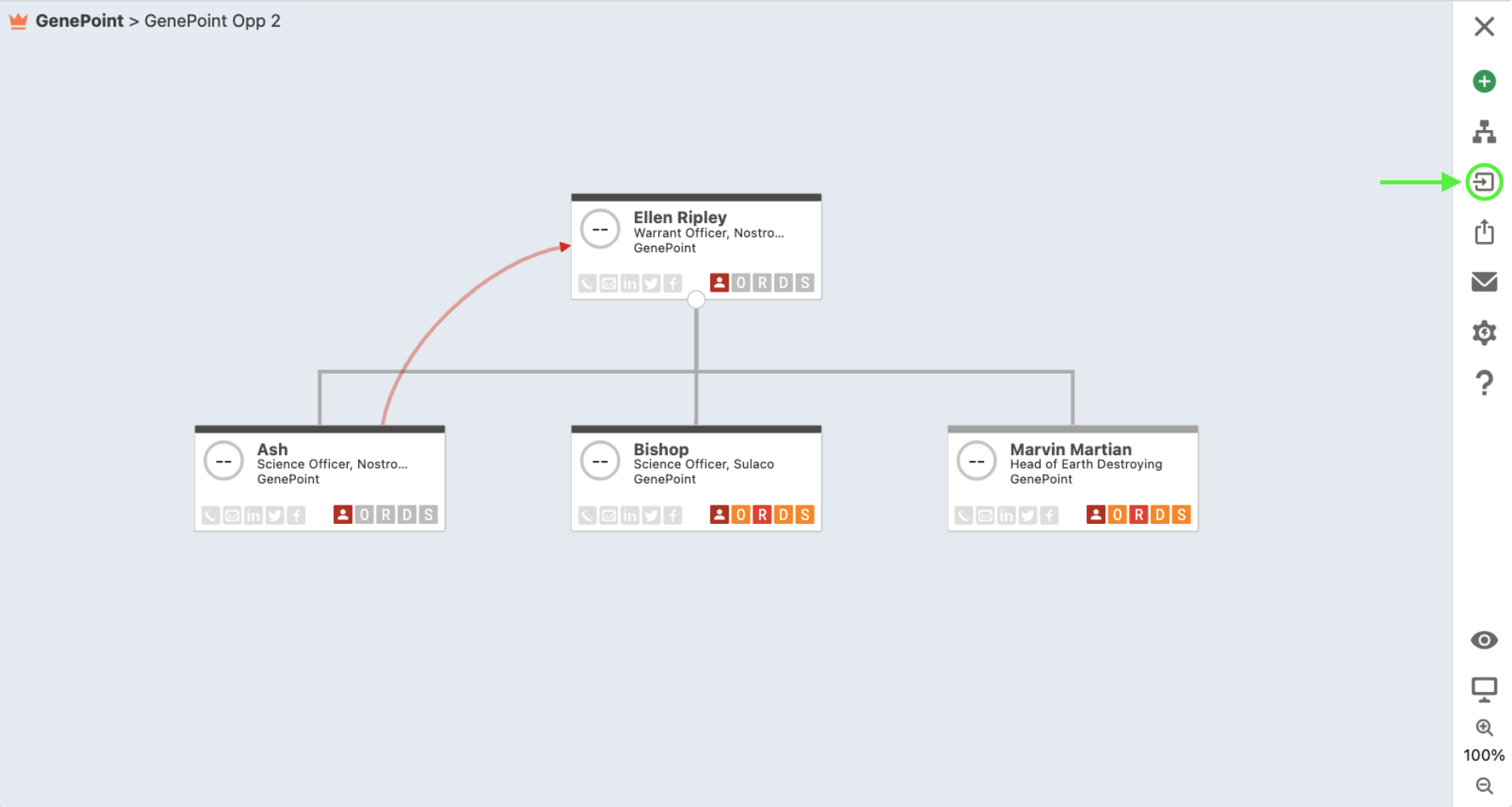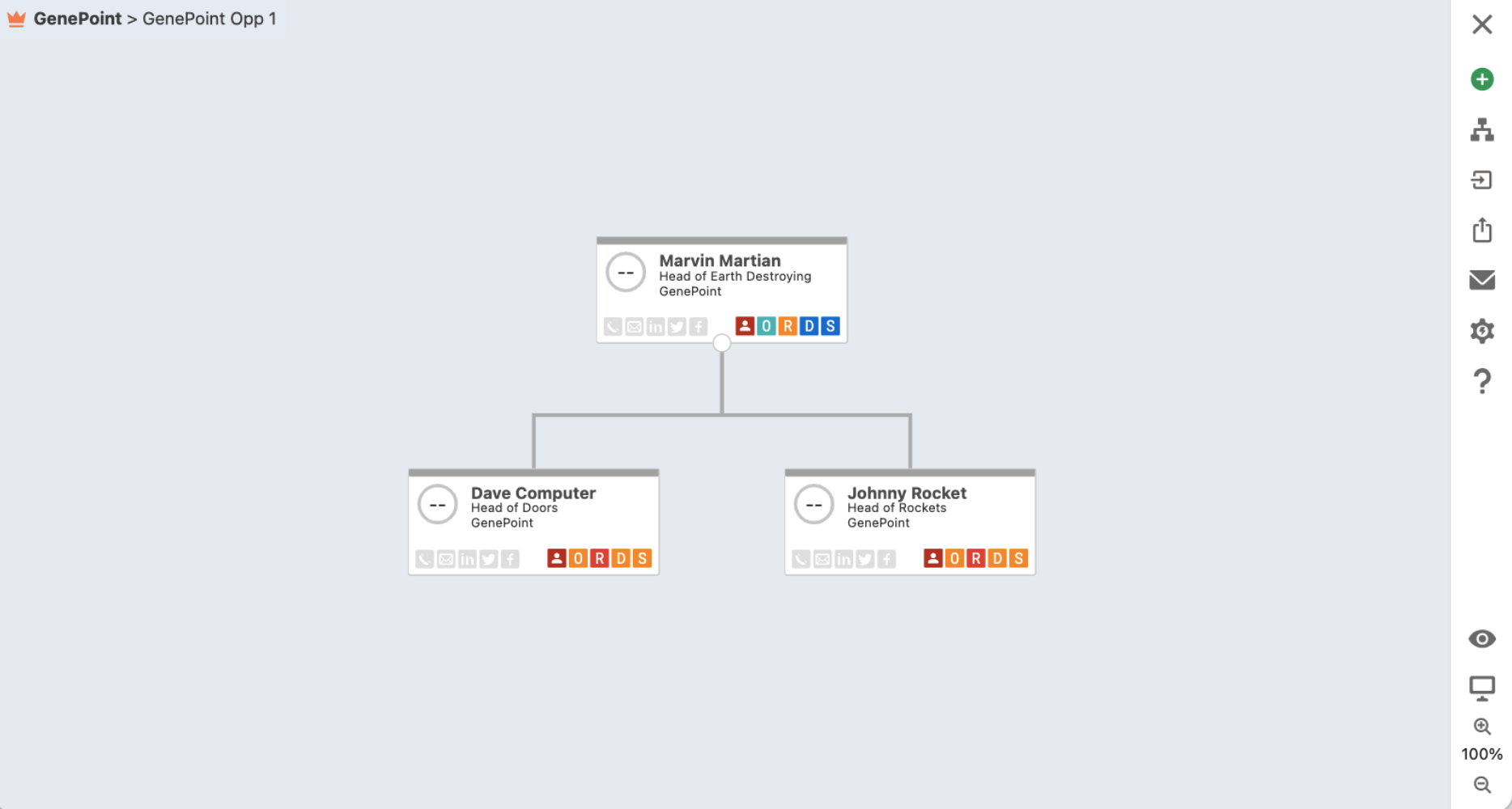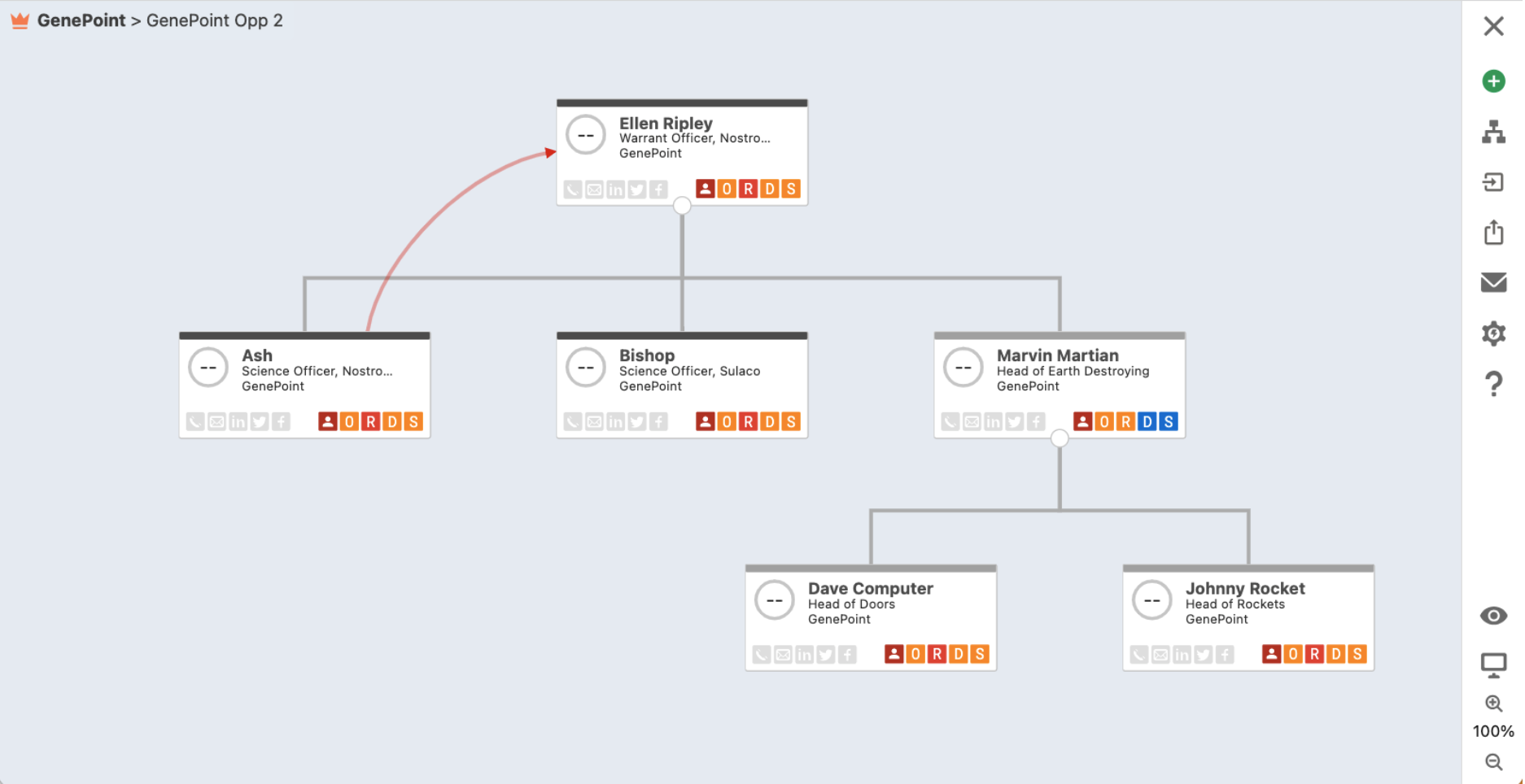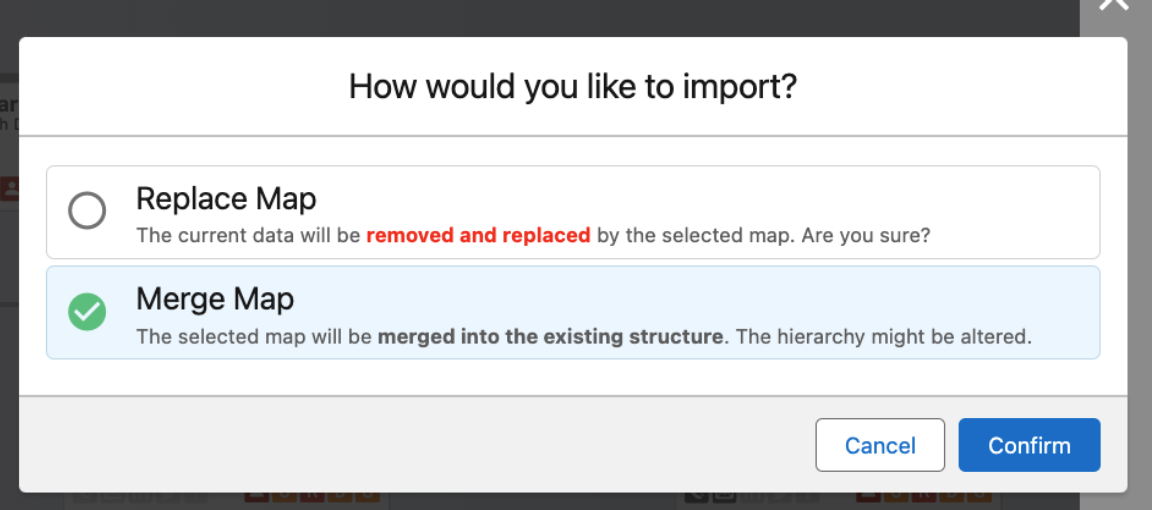Table of Contents
...
| Drawio | ||||||||||||||||||||||||||||||||
|---|---|---|---|---|---|---|---|---|---|---|---|---|---|---|---|---|---|---|---|---|---|---|---|---|---|---|---|---|---|---|---|---|
|
Access to Account and Opportunity level map list related to the Account
- + Add - Creates a new Account level Relationship Map
- Access to Organigram
- Clears filters, toggles to full screen or exports list as XLS
- Refreshes the map list
- Click on the column header object (Name, Primary,..) to rearrange the data
- Applies Filters - set, apply or clear filters
- Shows number of Stakeholders in the map
- Edits map name and sets map as Primary or Deployed
- Deletes the map
...
| Drawio | ||||||||||||||||||||||||||||||||
|---|---|---|---|---|---|---|---|---|---|---|---|---|---|---|---|---|---|---|---|---|---|---|---|---|---|---|---|---|---|---|---|---|
|
- + Add Add a contact to the Opportunity Stakeholder List
- Display the map for drag and drop functionality
- Import Data or Delete All Records
- Shows % progress of Stakeholders Role Goals
- # of Economic Buyers present / goal
- # of Procurement Stakeholders present / goal
- Click on the column header object (Name, Reports To, etc..) to rearrange the data
- Click on Name to open Stakeholder Overview
- Inline editing for key attributes
- Edit Stakeholder
- Delete Stakeholder
...
- Click + Add button
- Enter map Name, select Primary or Deployed and Save.
- Primary: Makes the map the Account's primary map. Each account may have only one primary map.
Note: Selecting Primary will override the current primary map. Primary map cannot be imported into other map or added as Submap. - Deployed: Makes the map generally available.
Note: Deployed maps can be imported into other map or added as a Submap to other maps.
- Primary: Makes the map the Account's primary map. Each account may have only one primary map.
- Click the Save button.
- You will be redirected to the mapping tool once the record is saved.
...
Stakeholder Layout & Navigation
The following describes the relevant components and related navigation.
Drawio simple 0 zoom 1 inComment 0 custContentId 1967620191 pageId 903774217 diagramDisplayName Stakeholder layout.xml lbox 1 contentVer 1 revision 4 baseUrl https://tspcinc.atlassian.net/wiki diagramName Stakeholder layout.xml pCenter 0 width 599.65 links tbstyle height 641
- Contact Photo - Upload/change/delete a photo or url link.
- Stakeholder Name - Opens a new window with contact information.
- Title - Title
- Company - Account Name / Company Name
- Address - Opens the location in google maps.
- Role - Indicates the Stakeholder's role in the buying process.
- Relationship - Indicates the depth of the relationship.
- Decision Status - Indicates the Stakeholder's status in the decision making process.
- Support Status - Indicates the depth of relationships between Stakeholders.
- Detail Tab - Display Stakeholder information.
- Actions Tab - Add tasks
- Notes Tab - Add relevant notes about the Stakeholder.
- Covered By - Indicates the person from your organization responsible for this stakeholder.
Note: The 'Covered By' tab is only visible on Opportunity level Relationship Maps. If this field is not displayed, it has been disabled in the Admin Settings. - Contacts - Key Stakeholder contact attributes.
- About Stakeholder - Provides an overview of the Stakeholder, including goals and background.
- Additional Contact Fields - Displays additional Stakeholder attributes provided by your organization.
- Edit - Edit Stakeholder information.
- Delete - Delete Stakeholder.
...
Hide or discplay existing Lines and Flags
Hiding or displaying existing Lines and Flags is done from the main relationships map page.
Click the icon on the right side of the Map surface
Toggle to display or hide lines or flags
- Note: Deselecting individual flags from the Stakeholder node must be done from the ClosePlan admin tab > Environment > Relationships > Fields
...
When Control Opportunity Contact Roles in the ClosePlan Admin environment is enabled, and you select Role on the Stakeholder, it will propagate to Contact Role on the Opportunity.
Merge Maps
Merging Maps is the process of joining two different Maps into one Map.
The process begins with a ‘Target’ Map.
...
A ‘Source’ Map is then selected.
The contents of the Source Map are added to the Target Map.
This merging process may create conflicts or anomalies, and so some conditions will apply to this process.
Please read the following to get a better understanding of what will happen when you choose to Merge Maps.
Terms:
Target Map: The Target Map is the Map into which the Source Map is placed. The Target Map can be an Account Map or an Opportunity Map
Source Map: The Source Map is the Map that will be merged into the Target Map. The Source Map can be an Account Map or an Opportunity Map
Contact: The individuals associated with your accounts.
Stakeholder: Stakeholders are the individual Contacts on the Account or Opportunity level. Stakeholders are bound to Salesforce contacts. Each Stakeholder contains relevant information related to the Account and to the Opportunity.
Account Map: A ClosePlan Map that is associated with an Account. Accounts may have more than one Map.
Opportunity Map: A ClosePlan Opportunity Map that is associated with an Opportunity. Each Opportunity may have only one Map.
Node: Represents a Contact on the Map surface. The Node contains the basic Contact information and other specific features.
Map Merging Scenarios
General
As a general example, the below shows a Source Opportunity Map merged to Target Opportunity Map
Steps:
- Target Map is open
- Click ‘Import Map Icon’
- Select Source Map
- Select ‘Marge Map’
Target Map: GenePoint Opp 2
Source Map: GenePoint Opp 1
Result:
Scenario 1: Account Map to Account Map
A Source Account Map is merged into a Target Account Map.
- If the Source Map contains nodes that are not present in the Target Map, those nodes will be added to the Target Map.
- If the Source Map nodes are the same as nodes on the Target Map, the merge will overwrite all the attributes of the node on the Target Map EXCEPT the Role
Scenario 2: Opportunity Map to Account Map
A Source Opportunity Map is merged into a Target Account Map.
- If the Source Map contains nodes that are not present in the Target Map, those nodes will be added to the Target Map.
- If the Source Map nodes are the same as nodes on the Target Map, the merge will overwrite all the attributes of the node on the Target Map EXCEPT the Role
Scenario 3: Account Map to Opportunity Map
In this scenario we are merging Account relationship Map (source) to Opportunity relationship Map (target).
- If the Source Map contains nodes that are not present in the Target Map, those nodes will be added to the Target Map.
- If the Source Map nodes are the same as nodes on the Target Map, the merge will overwrite all the attributes of the node on the Target Map EXCEPT the Role
Scenario 4: Opportunity Map to Opportunity Map
In this scenario we are merging Opportunity relationship Map (source) to another Opportunity relationship Map (target).
- If the Source Map contains nodes that are not present in the Target Map, those nodes will be added to the Target Map.
- If the Source Map nodes are the same as nodes on the Target Map, the merge will overwrite all the attributes of the node on the Target Map EXCEPT the Role
Issues when Merging Maps:
Cyclic Relationship
Existing nodes in Maps are not deleted during the merging process. This may lead to a situation where node A reports to Node B in the Target Map, and Node B reports to Node A in Source Map (or vice-versa).
The Merge process will not permit this looping ‘cyclic’ hierarchy.
In this case, the hierarchical relationship found in the Source Map will take precedence.
Be Careful
Merged mapping cannot be automatically undone. When the User completes the command by clicking ‘Confirm’ the Target Map will be merged with the Source Map.
- If you have any doubts about the correct course of action, consider your actions carefully.
- IF you merge a map and need to undo, it will be a manual process of deleting added Stakeholders and returning Stakeholder Attributes on the Target Map to their original settings.
- Difficult, but not impossible.
Please, merge responsibly.
Show Submap Stakeholders
To show the submap´s Stakeholders, open the submap in another window, or view the map in Preview mode via the Preview icon .
...



